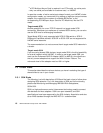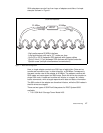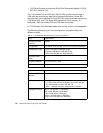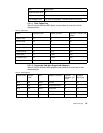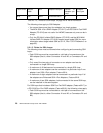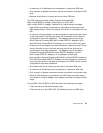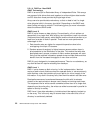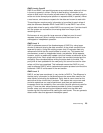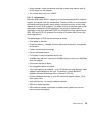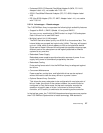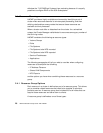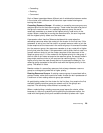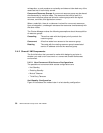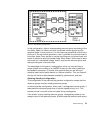
24 IBM Certification Study Guide AIX HACMP
As with RAID 3, in the event of disk failure, the information can be rebuilt from
the remaining drives. RAID level 5 array also uses parity information, though
it is still important to make regular backups of the data in the array. RAID level
5 stripes data across all of the drives in the array, one segment at a time (a
segment can contain multiple blocks). In an array with n drives, a stripe
consists of data segments written to n-1 of the drives and a parity segment
written to the nth drive. This mechanism also means that not all of the disk
space is available for data. For example, in an array with five 2 GB disks,
although the total storage is 10 GB, only 8 GB are available for data.
The advantages and disadvantages of the various RAID levels are
summarized in the following table:
Table 10. The Advantages and Disadvantages of the Different RAID Levels
RAID on the 7133 Disk Subsystem
The only RAID level supported by the 7133 SSA disk subsystem is RAID 5.
RAID 0 and RAID 1 can be achieved with the striping and mirroring facility of
the Logical Volume Manager (LVM).
RAID 0 does not provide data redundancy, so it is not recommended for use
with HACMP, because the shared disks would be a single point of failure. The
possible configurations to use with the 7133 SSA disk subsystem are RAID 1
(mirroring) or RAID 5. Consider the following points before you make your
decision:
• Mirroring is more expensive than RAID, but it provides higher data
redundancy. Even if more than one disk fails, you may still have access to
all of your data. In a RAID, more than one broken disk means that the data
are lost.
• The SSA loop can include a maximum of two SSA adapters if you use
RAID. So, if you want to connect more than two nodes into the loop,
mirroring is the way to go.
• A RAID array can consist of three to 16 disks.
RAID Level Availability
Mechanism
Capacity Performance Cost
0 none 100% high medium
1 mirroring 50% medium/high high
3 parity 80% medium medium
5 parity 80% medium medium



